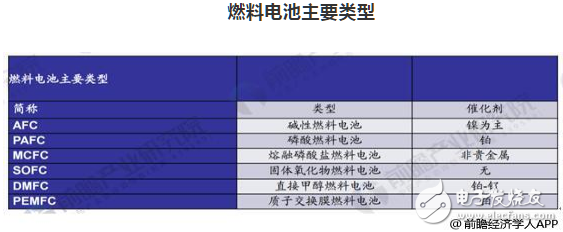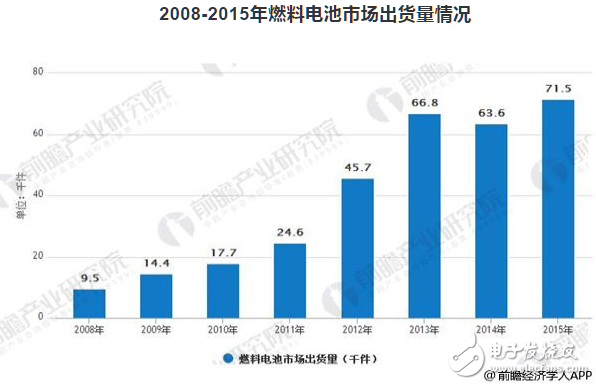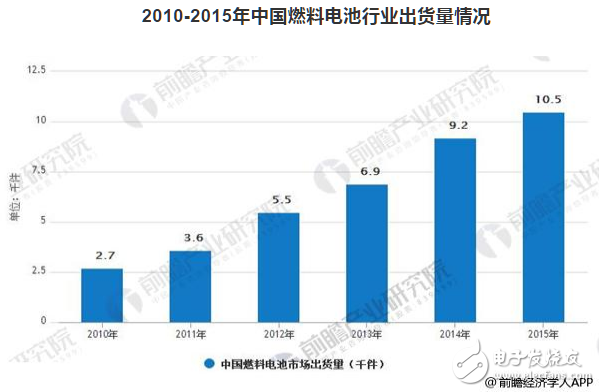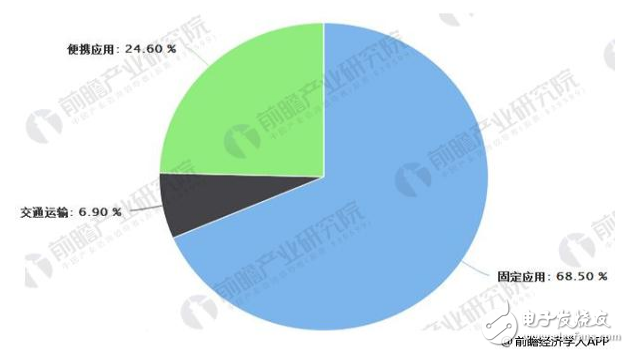A fuel cell is a power generation device that directly converts the chemical energy of a fuel and an oxidant into electrical energy by an electrochemical reaction. Mainly composed of positive electrode, negative electrode, electrolyte and auxiliary equipment.
In addition to hydrogen, commonly used fuels include methanol, hydrazine, hydrocarbons, and carbon monoxide. The oxidant is typically oxygen or air. Commonly used electrolytes are phosphoric acid, potassium hydroxide, molten carbonate, and ion exchange membranes.
A fuel cell is a power generation device that directly converts chemical energy present in a fuel and an oxidant into electrical energy. Unlike conventional internal combustion engines, the chemical energy in the fuel is not released by combustion but by electrochemical reaction, thus having the advantage of high efficiency and zero emissions.
There are six types of fuel cells, of which PAFC, DMFC, and PEMFC use platinum-based metal catalysts.

The global fuel cell market is developing rapidly. According to the data of the Fuel Cell Industry Market Prospect and Investment Strategic Planning Analysis Report released by the Prospective Industry Research Institute, the global fuel cell shipments in 2008 were 9.5 thousand, and the fuel cells in 2015 were released. The volume reached 71.5 thousand, which is 7.5 times that of 2008.

In 2015, China's fuel cell industry shipments were about 10.5MW, an increase of 14.13% from 9.2MW in 2014.

According to the application field, fuel cell shipments in the fixed application industry accounted for 68.5% of total shipments in 2015, reaching 49 thousand; portable application shipments accounted for 24.6%, reaching 17.6 thousand; Transportation industry shipments accounted for 6.9%, 4.9 thousand. Among them, in 2015, Asian fuel cell shipments accounted for 65.2% of global shipments, reaching 46.6 thousand; North American fuel cell shipments accounted for 22.0%, reaching 15.7 thousand; European shipments The volume accounted for 11.6%, reaching 8.3 thousand.

Fuel cell technology is the best alternative to internal combustion engine technology and represents the future direction of the car. However, if several constraints on the development of fuel cell vehicles are taken into account, it will be found that fuel cell vehicles are not yet commercially available for some time to come. The most optimistic forecast is that the commercial production of fuel cell vehicles with pure hydrogen as fuel will take at least 15 years, and even if it is commercialized to a certain extent, it will be a costly way.
Fuel cell vehicles are still in the initial stage of industrializationAt present, the domestic fuel cell vehicles are mainly model vehicles, which are generally used for special occasions, tourism and sightseeing, and have not yet achieved real commercialization. Although some fuel cell vehicles are commercialized in the international market, they are still dominated by taxis.
The high cost of fuel cell vehicles makes it difficult to get to market in the short term. The cost of each of the three fuel cell buses exhibited at the 2008 Beijing Olympic Games is more than 3 million yuan. The current Euro IV standard conventional engine low-floor buses imported by the public transport system are only sold for more than 1 million yuan. From the perspective of market economics, it is difficult to complete market-oriented promotion with high cost, and mass production cannot be achieved without marketization, and the cost cannot be reduced, eventually leading to a vicious circle of cost and sales.
Policy support is the main driver of industry developmentWe will improve the support policies for new energy vehicles, support research and development of power batteries and fuel cell vehicles, and carry out pilot demonstrations of intelligent network vehicles. Organs and enterprises should implement the requirements for new energy vehicles in vehicle renewal, increase the assessment of the proportion of new energy vehicles in new and updated buses, and deduct fuel and operating subsidies for non-compliance areas. Innovate operating modes such as time-sharing and vehicle sharing. All localities may not impose restrictions or purchases on new energy vehicles, and those that have already been implemented shall be cancelled.
Key investment in the development and production of new materials for proton exchange membrane fuel cells
Proton exchange membrane fuel cells are the closest commercial fuel cell, and the most promising engine for future electric vehicles has made great progress in recent decades. In 2005-2010, in the small power supply field alone, more than 150,000 fuel cells have been delivered worldwide, with a total power exceeding 15 MW, 96% of which are proton exchange membrane fuel cells. In the transportation field, proton exchange membrane fuel cells have received wide attention because they are the most promising engines for future electric vehicles. Almost all major automobile manufacturers in the world are working on the development of fuel cell vehicles.
Key investment in fuel cell vehicle development and productionIn the long run, hydrogen energy has attracted worldwide attention as the cleanest and most efficient new energy source. Fuel cell vehicles with their zero tail gas emissions and independence of energy are expected to achieve the long-term dream of the automotive industry, and show their good application prospects. Although it is difficult to commercialize in a short time, China is in the fuel cell. Technology development still has certain advantages. It should be combined with foreign advanced automobile manufacturing technology to strive to bring fuel cell vehicles to the market as soon as possible, thus having broad investment potential.
15.6 inch i5 5th Budget Gaming Laptop in plastic is more competitive one in device in 2022, only need around 300usd. However, 15.6 inch 500 dollar gaming laptops is one of the most important top 10 budget gaming laptops, like 14 inch i7 budget gaming laptop under 500, 15.6 inch 11th 512gb laptop, etc.
However, top budget gaming laptops also have other levels, like 15.6 inch i5 laptop 10th generation, 15.6 inch 11th generation laptop i7 512gb, etc. 2022 top laptops under 500 with 14 inch i3 i5 i7 10th you can see here also.
The custom laptop is also of updated, quality hardware, big battery, rich slots, charging by Type C, etc.
Nowadays, the hardware and mature of custom laptop is nearly no difference with brand one, so pls believe you can get a satisfy laptop for your special project, like students project, office project, gaming club etc.
Except laptop, also have custom Android Tablet, Mini PC , All In One PC, 2 In 1 Laptop, also availble.
Any other specail demand, you can contact us and share your requirements details, then matched details sended quickly.
Budget Gaming Laptop,Budget Gaming Laptop Under 500,Top Budget Gaming Laptops,Top Laptops Under 500,Top 10 Budget Gaming Laptops
Henan Shuyi Electronics Co., Ltd. , https://www.shuyiaiopc.com